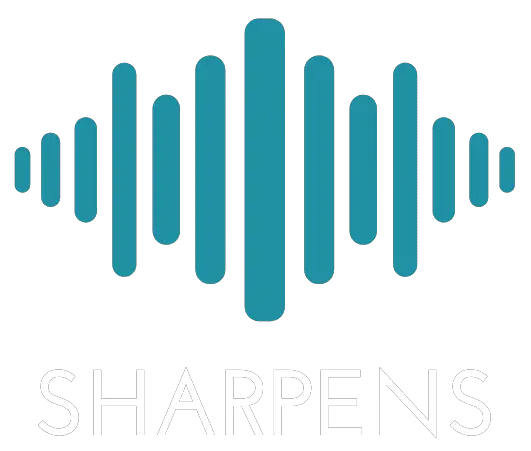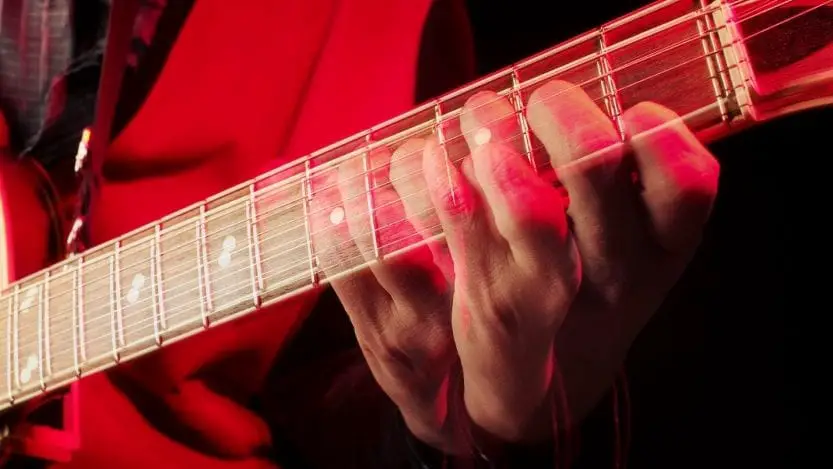Engaging in a guitar exercise is no doubt one of the most effective ways to improve your skills as a musician. If you are aiming at becoming a pro guitarist, guitar exercises are a sure way to take the hype up!
Regardless of the style of music that you are comfortable playing, or even your level of expertise, organized time for practicing guitar exercises will help you to improve as a player.
The reality, however, is that finding the precious time to sit down and do an exercise and spend time every day to practice may look like a challenging and daunting task combined. To help you with your goal, here are 23 guitar exercises that will make you a pro guitarist:
1. Tips for Warm-Up
As with any other type of activity, you are warming up is very important. This means that even before you touch a guitar, a warm-up will help you enjoy the experience better. As a matter of fact, this part is just as important to have an actual productive playing session while avoiding injury at the same time.
As you start your practice session, you need to take just a few minutes to warm up. You may want to start with some easy stretches in order to loosen your wrists up. This could include holding your hands as it is extended in front of you, then grasp the top of your fingers using the opposite hand, while gently pulling them back until you feel the tension on your wrist. This can also be done with the other wrist.
Afterward, you can flex your wrist to ensure that your fingers point down to the floor. Using your other hand, grasp the back of your hand, while pulling back gently until you can feel a stretch on your wrist back. Try holding it in for 20 seconds before releasing gently. This can also be done with the other wrist.
This video features some amazing options for warming up.
2. Alternate Picking and String Skipping
In order to play guitar fast, it is important to learn the trick behind alternate picking. This technique in guitar playing uses alternating upward and downward strokes in a continuous way. When done on high speed using a single string that voices the same note, it may be called “double picking” or “tremolo picking”.
The concept behind alternate picking is relatively easy. In order to make this happen, it is very important to figure out which technique in picking works best for you. This means the way that you position your right hand as you hold the pick.
Unlike that of a classical guitar, the electric and acoustic guitar will allow you to select your preferred technique for the right hand. Players of classical guitar usually position their right hands in a certain way. For electric guitar players, on the other hand, the right-hand technique only becomes wrong when it hinders you from achieving a specific technical proficiency level.
3. The Finger Twister
After warming up, you can get those fingers finally moving around your fretboard. The name suggests that it is similar to the famous Twister game, but rather than moving your hands and feet to various spots on a mat on the floor, you will be moving your fingers towards the six strings on your guitar.
The difference, though, is that you cannot simply just twist your fingers in a knot. This exercise assigns one finger per fret. Look for a spot where you can lay your fingers comfortably. You can start with frets 5 to 8 or 9 to 12, and later, you can try frets 1 to 4.
To practice, you can ask a friend to call out a random string and a random finger. You can also take advantage of some apps created by other guitarists, such as the Custom Flash Card, that will do the job for you.
4. Minor Arpeggios
Minor arpeggios refer to the notes for minor chords that are played one at a time. A number of ways are available to play minor arpeggios on the guitar neck. You can start with some of the most basic forms, before getting your way up. With this in mind, you can also want to check minor arpeggios for guitar primers before starting to dig into the more challenging ones.
Every minor arpeggio form will have two versions. One will have a suggested left-hand fingering, while the other will indicate the note “functions”. The numbering system for the guitar functions is based on how the notes actually compare to the major scale coming from the same root.
If you are a beginner, you may not completely understand the theory behind the functions, especially if you are still learning the arpeggio forms. Check out the video below to learn more about minor arpeggios.
5. Major Arpeggios
Arpeggios are chords that are played one note at a time. When playing on a major chord, these major arpeggios help in connecting your solo to backing music. Some experts refer to arpeggios as the actual skeleton behind your solo, with movements and embellishments, including the scale phrases as the flesh.
For example, if you were playing with E major, an E major arpeggio will be connected intrinsically to the chord. This will provide you with a strong melodic base for establishing your solo with that chord.
Just like actual major chords, the major arpeggio has three features – the root, which is the note used to name the chord or arpeggio. Another is the major 3rd, which refers to the interval that provides the chord or arp its major sound. The third feature is the perfect 5th, which is a neutral sounding interval that plays a role in every major chord.
6. Practice Hammer-Ons
A very important exercise that every guitarist needs to know is hammer-ons. As you start learning how to play guitar, you will quickly realize that there are different ways to make the notes sound aside from just plucking them. One of them is the hammer on.
A hammer on exercise is simple. You can start by holding a note down on a fret using your index finger. Then, pluck the note, and afterward tap your middle finger sharply down on the same string, then a fret or two up from the first note fretted. You have just sounded two notes though you have only plucked the string one time.
It does not matter which finger you will use, whether you are using your index and middle fingers, ring and index fingers, pinkie and middle fingers, or other combinations. Also, the number of frets between the two notes does not matter, since you are only limited by the reach of your fingers. Most of the hammer on exercises you can start are 1, 2, or 3 frets apart, though if you can do multiple frets apart, it is oftentimes better.
7. Practice Pull-Offs
A pull-off is a technique that is used by the guitarist on a fretted string, which is already ringing. By pulling the string lightly while also removing the finger that holds the note down, a new note is played without having to pick the string again. It is the opposite of a hammer-on.
As you pick a string, it creates an instant staccato attack. With a pull-off, that attack is eliminated. The overall output offers a slippery sound. Pull-offs can be used constantly. In fact, there is a likelihood to find good pull-offs in your favorite guitar solos and riffs.
Among the things that you can try while doing a pull-off is hammering onto a specific note, and then pulling off to its original note. This can be repeated as long as possible, without the need to pick the string again. When done over and over again, in a speedy movement, the action is referred to as a “trill”.
You can also try playing the descending version on every scale that you are familiar with using the pull-off techniques. You may begin by normally starting with the ascending version of the scale. As you reach the top note of the scale, you can pick the note again, and pull-off to the previous note of the string. The goal here is to pick every string once only, with all of the other remaining notes sounded through pull-off.
8. Note Bends
Another technique that you can learn in order to be on your way to becoming a professional guitarist is bending. One thing to note is that your fingers might end up feeling sore after this exercise. As you keep practicing, however, your fingers will be becoming stronger, and bends will become much easier.
You can start with the half-step bend, sticking with the G minor pentatonic scale in order to practice. On the G string, you can place your 3rd finger on the 5th fret. As you do a half-bend step, you would want to push the string so that the note becomes similar to the pitch with a half-step pitch higher, in the same way, that you move one fret higher up with your guitar fret.
It is also important to note about the unwritten rule when it comes to bending strings. Use your available fingers at the back of the finger that you are bending with. The goal is to help push the string. If you are holding down a note using your 3rd finger, you may also want to use your 1st and 2nd fingers to assist in bending the string.
9. Remembering Chords
A very important part of playing the guitar is getting familiar with guitar chords. In fact, they make almost all of the music. At times, getting them down can prove to be a daunting thing. In order to assist you with your chord practice, there are some tips that you can do.
For one, you can correctly practice your chord. Ensure that each of the notes is clear and nice. After being satisfied with the sound of the chord, you can then squeeze your left hand. Doing so will engage your muscle memory, which is vital for guitar players because it helps in remembering chords.
It is also important to note the need to play your selected chord correctly. After all, muscle memory cannot really tell if the chord is played accurately or not. If you practice by squeezing your hand in order to remember the chord when it is not right, you will also be training your hand to remember the chord that is incorrect.
10. Not Looking at Your Guitar Chords
Many guitarists find it challenging to remember chords. With exercise, however, playing the guitar without looking at the chords is possible. Practice with your chord until you perfect it. When you are finally satisfied, you can try playing the chord without laying eyes on it.
After playing the chord, you will be able to immediately tell whether the chord played is wrong or not. If it is wrong, then you can simply try again. If you got it right, then good for you! This does not mean that you can stop practicing, however.
If you are a beginner, you may want to try using quick and easy chords to practice and memorize. Once your hand-eye coordination has improved, you can then move to the more challenging ones and learn some skills along the way.
Avoid draping your thumb over the top of the neck or attempt using your palm in order to cup it. A space between the hand and the guitar should be present so that you can freely move about the fretboard.
11. Smooth Chord Changes
One of the challenges that most guitarists face is learning how to actually change chords. Among the problems they encounter are the complex finger arrangements, and how to smoothly move from a chord to another. Stumbling in between the chords will only slow the song, making it even obvious that you are not yet familiar with the techniques in chording.
One thing that needs to be known is that this hurdle cannot be overcome by magic. This skill can only be perfected using old-style practice, and by using some basic techniques. After learning the techniques behind effective chording, and continuing to practice them faithfully, changing words will eventually become automatic in you.
Properly holding your instrument is important for expert chording. To do so, make sure that your overall posture is correct. Sit up straight and avoid hunching over. The strings should be approached with the fingers of the fretting hand in a slightly spread out and relaxed curl.
12. Practicing Down Strokes
With picking downstrokes, you need to pluck all the notes on all strings using a downward movement. Even though this technique may not be as effective as that of alternate picking, it produces quite a strong tone and is also useful in several ways. Downstroke picking is one-half of the alternate picking method.
There are several uses of this technique. For one, it is quite useful in playing certain passages which are not dense with notes but comes with complex rhythm, including triplets, or note syncopation. In these occurrences, a basic alternate picking pattern can make it even harder to hit the right notes.
13. Finger Picking
The fingerpicking technique is an amazing way to add extra texture and dynamics to your guitar playing. To practice the technique, you can try using your thumb and first finger.

For each ‘p’ on the tab, you need to use your thumb, and for each ‘I’, you will use your first finger.
14. Adding Up Strokes

Now that you are already comfortable with a number of techniques, including drown strokes, you may now want to add some strokes. If you practice them to almost perfection, you will turn yourself into a strumming pro soon.
While some imagine that an upstroke is the exact opposite of a downstroke, the case is actually different. When playing an upstroke, you only have to play the top 3 strings. For every strum, you will go up, down, up, down, continuously.
15. Listening to Learn a Chord Progression
One of the best techniques to learn in guitar playing is using your ears in learning a chord progression. Using the ears will enable you to develop your musicality. There are some tricks for you to do so. For one, you can work with a chord progression, and then try to identify how many chords are in the progression and whether they are major or minor.
If you can do so, you are halfway your goal. Then, you can start finding the root note in the chord. This refers to the first and the lowest note in a chord, and it can help you in finding out which key your chord is actually in.
16. Melody by Ear
This technique can be tricky for beginners. You need to try and identify each note instead of the entire chords. This may be challenging, but the results can be all worth it. When working out on a practice melody, you can try to find the key of the melody, find the first note, and identify whether the melody uses any strings, and if there are, how many are they.
The best way to accomplish this goal is by trial and error. This means the need to listen to the chord as many times as possible. Then, you can try to find the notes on your musical instruments.
17. Knowing Your Fretboard
Being able to traverse your fretboard comfortably is as important as being able to play anything in your instrument. Once you finally learn how to play all of the 12 keys in a single position, you need to be able to play such patterns in every position on the fretboard.
One recommended exercise is playing a single scale for each position from the first fret through the 12th.
18. Chord Inversions
If you want to produce active moving rhythm parts using basic chord progressions, learning about the inversions of your favorite chords will do the trick. Inversion refers to a chord where other notes aside from the root note are the lowest note of the chord.
19. Hybrid Picking
Whether you are a fingerstylist or a flat picker, adding a hybrid on your list of tricks will help you turn into a pro. Hybrid picking refers to a combination of finger styling and Flatpicking. It gives you the best of both techniques. Upon mastering it, you can find yourself getting familiar with it.
20. Play in Position
Playing in a position means the possibility of exploring what you can do with finger placement. This means playing in all of the 12 keys within a six fret range. With jazz music, these patterns and skills ready at hand will save you from the need to look for the neck for the next scale pattern, thus resulting in a more seamless way of phrasing through the changes.
21. Taking Control
Some guitar players turn their amps to 10, not really knowing what they are missing. They miss the purpose of the controls. This means that when you are using an amp, you need to know what the features are for, and need to take control over the features. For example, for the tone control, whether you love a rolled-off clean tone or one with a full-on funky brightness, there is something available for you.
22. Learning to Sight Read
Learning to sight-read will further enhance your skills. There are a lot of materials that are available on the market, and you are not even limited to guitar books. There are some flute or violin concertos, which are effective since their sheet music is similar to that of guitars.
23. Playing With Others
Playing with others is one of the most entertaining ways to further improve your skills as a musician. While you have the option to play along to your fave tracks, nothing beats actual playing with real musicians.
Conclusion
The guitar exercises mentioned above are just some of the many techniques that you can do in order to become a pro guitarist. The best advice that you can get is not to learn all of them all at once, but learn them slowly but surely, to the point that your muscles remember the technique.



